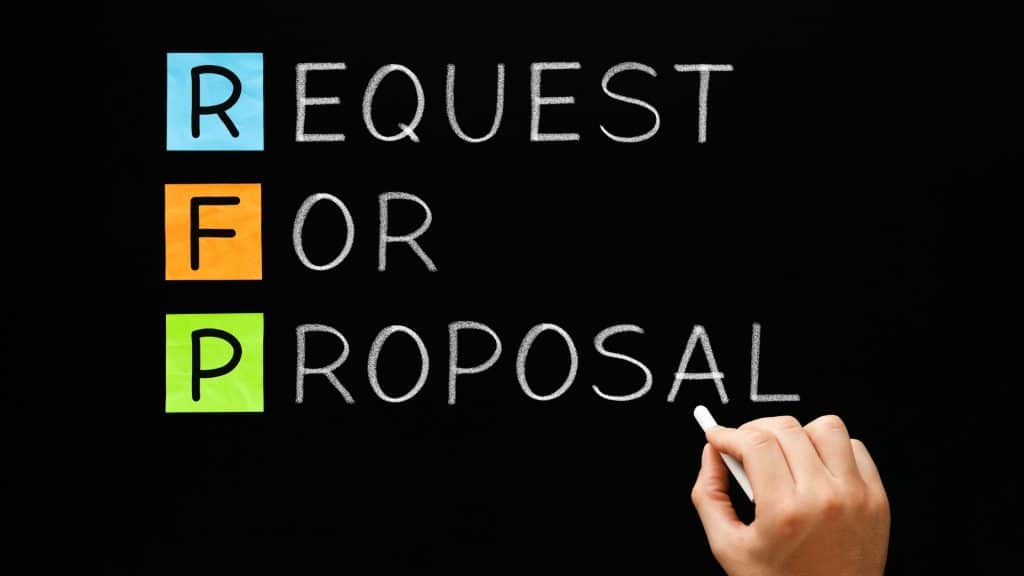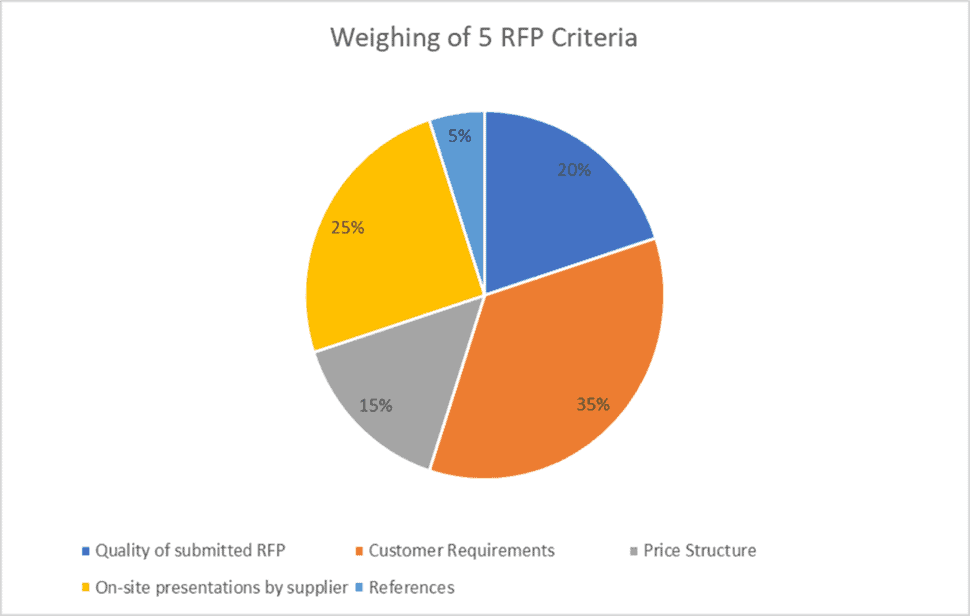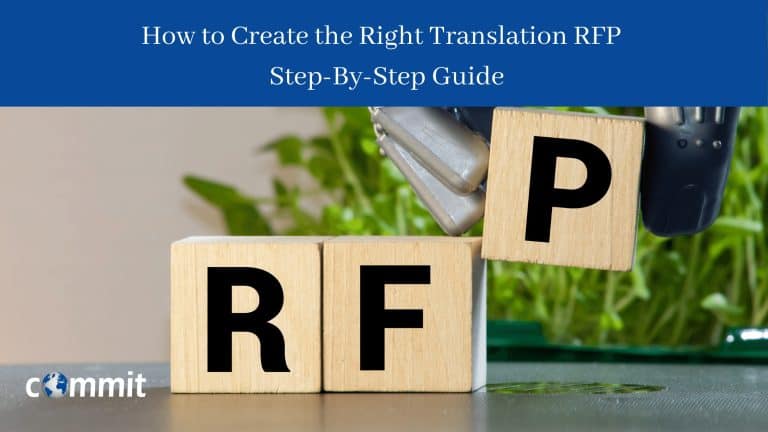|
Listen to Post
|
How to align your RFP/RFI with changing market and customer requirements
The question on how to align bidding content with changing requirements is one for both the buyer and supplier of localization services. How can the buyer ask the right questions and filter out the best candidates for the job; and how can suppliers stand out in this increasingly competitive environment and be selected over their industry peers.
Internet of Things, technological advancements, digital marketing, Machine Translation: these and many more developments have impacted the translation and localization business in some shape or form in past decades. Yes, translation and localization very much remain an essential practice for many companies, e.g. life sciences. However, from being a special service some time ago, it has grown to become a commodity for many buyers in different industries, it has become a given. Some companies even consider translation to be a “necessary evil”; “necessary” because it is mandated by European or local law, and “evil” because it costs (a lot of) money and companies tend to not always see the direct potential ROI of having materials translated in other languages.
Nevertheless, in many industries, e.g. in Life Sciences but also many other industry verticals, there is no way around documentation and localization, as manufacturers want to go global. Offering their products locally in local language has become a powerful marketing tool.

Asking the right questions
Asking the right questions and making sure that everyone directly and indirectly involved or impacted by the result of a translation RFP, is on the same wavelength, is very important.
- Which new markets do I want to enter: how to find and align the most suitable suppliers?
- What new processes need to be added: what new mandated processes do I need to implement for my company and need to be outsourced?
- Company’s financial mid- to long-term strategy: when buyers want to get a high-quality translation job done, faster, better, which company is best equipped to offer that service at a competitive price?
- Outsourcing vs. insourcing vs. hybrid model: what is the extent of the role that I want a supplier to play? (hybrid, insourcing or outsourcing). These are three completely different models and will force the buyer to ask different questions to the candidate suppliers. To illustrate, some buyers are very mature and have internal staff such as localization managers, terminologists etc. This puts the potential role of the supplier in a different light.
- Have legal or company requirements changed for your industry: The question on how to align bidding content with changing requirements is one for both the buyer and supplier of localization services.
How can the buyer ask the right questions and filter out the best candidates for the job; and how can suppliers stand out in this increasingly competitive environment and be selected over their industry peers. On the one hand, buyers will have to align these changes with their company and business goals to stay on top of things. Suppliers with comparable qualifications on the other hand will need to come up with that extra “surprise element” that will make them stand out and gain the buyers’ confidence and vote.

Translation RFP Preparation and Execution
In summary, a good preparation of an RFP starts internally. There are various steps that need to be taken to create a thorough, efficient, and effective translation RFP. They include but are not limited to the following:
In the preparation phase:
- Inclusion of the key stakeholders of your company: defining an internal RFP key-decision-making team of company representatives is imperative: who are the key players in the company that co-define a successful partnership with a supplier? Note that an RFP has many aspects that need to be addressed besides the core aspect of being able to provide high quality translations.
- Appointment of an RFI/RFP main Point of Contact. This main PoC is to be assigned early in the process and plays crucial role especially in larger translation RFPs with many stakeholders involved. The PoC acts as interface between buyer and supplier, between internal stakeholders. The PoC coordinates and keeps the process going.
In the creation phase:
Let’s address some of the practicalities during the creation of the translation RFP. How should we structure the document, what format to use, how to prioritize and weigh criteria, etc.
- Carefully balance between open and closed questions to allow suppliers to impress you with their capabilities to a certain extent.
- You do not want to offer free-text templates as it does not facilitate a fair comparison and you risk misinterpretation and ambiguity.
- Try to be as specific and to the point as possible and do not ask hundreds of questions. Generic questions do not add value.
- To save everyone involved in the bid a lot of time, money and effort, define your specific reasons for immediate disqualification in the creation phase of the translation RFP document and make sure this is also well understood by the candidate-suppliers. Think examples of:
-Refusal to work with a certain tool, technology or not being able to
-Unrealistic payment term, not being able to agree on them
-Other reasons might be too many typos in proposal, lacking responsiveness during the process etc. lacking communication skills
When you work on the specifics of questions, also include mandatory contract-specific requirements, especially because they are essential thus reason for immediate disqualification, when not met. Examples:
- Disclaimers and warranty restrictions. Do suppliers agree with them?
- NDA/MSA stipulations: do suppliers sign off on the content?
- Implementation time frame, how long does it typically take to implement a process, integrate other vendors, set up a multivendor strategy, implement a TMS and the cost of all the aforementioned
- Security-specific IT related questions (such as back-up process, mandatory archiving, data security, etc.)
- Invoicing: per project, monthly, payment terms, do you agree on partial invoicing by the supplier for larger projects that take several months, etc.?
- With regards to final and best pricing, make sure there are no hidden cost, will volume discounts be requested and included?

Translation RFP Evaluation
Once the appropriate translation RFP has been defined and created, the RFP will be sent out to a selected list of suppliers who will then submit their answers. After the deadline has passed, all input needs to be evaluated following a fair “comparing apples to apples methodology”.
Prior to issuing the RFP, the bidding company must have set a scoring and evaluation structure. According to this structure the input from all candidates will be evaluated and rated. It must be set up in a way that allows input from several company stakeholders in the process, thus permitting flexibility and weighted scoring in appropriate areas and providing an objective process for defining the finalists.
Note that depending on the industry, sub-vertical and/or the strategic goals of the company, scoring might be done in different ways.
Some of the objectives for a translation RFP scoring methodology are:
- Provide accurate comparison of supplier against individual RFP criteria
- Enable criteria to be objectively weighted – not all criteria are of equal importance
- Allow criteria to be grouped into sections, and allow weightings to be assigned both at section and criteria level
- Support multiple parallel sets of weightings to reflect different stakeholder’s priorities and permit ‘what-if’ analysis
- Enable multiple evaluators to contribute to the scoring process
- Allow the scores of multiple evaluators to be contrasted or aggregated (e.g. averaged)

When defining the evaluation and scoring criteria, the major components of the RFP to be scored need to be determined. The following 5 criteria components form a good basis for an objective evaluation of the RFP submissions. Each carry a different weighing:
1. Quality of the submitted RFP proposal: have questions been answered completely, has additional details been provided, does supplier have thorough understanding of what is being asked, quality of response.
2. Customer requirements: the supplier must indicate extent to which they meet a requirement: meets 100%, meets partially, meets partially and can customize to meet 100%. These requirements will eventually become part of the partnership contract.
3. Price structure: a difficult section if one wants to compare “apples to apples”. Suppliers have different approaches, different price sheets and discount schemes. The buyer could anticipate this situation by posing questions in a detailed, specific manner, leaving very little room for ambiguity. All services must be included e.g., in case of technology, set up implementation, maintenance, upgrades, etc.
Recommendation to set up cost section in modules, allowing evaluator to unravel modules and review individual pricing components. These modules can serve as individual building stones when a detailed quote is requested. Based on the type of project, you might need a set of modules.
Also, provide a forecast of estimated work; the more detailed buyers’ forecast of estimated work is, the more precise the mid- to long-term cost benefits can be estimated and thus the attractiveness of a certain partnership.
Because the on-site presentations require a major commitment of time and personnel for both parties, a two-phase process for the evaluations is recommended. Phase 1 would consist of the first three components listed above. Once the agency has evaluated the quality of the submitted RFP proposal, the extent of meeting requirements, and the total price of the solution, two or three supplier finalists – depending on the size of the RFP – could be shortlisted for step 4 and 5.

4. On-site presentations by supplier: this is an opportunity for suppliers to demonstrate rather than describe. It is basically an opportunity for stakeholders to share concerns and re-validate suppliers’ response on-site and see them “in action” during a life demonstration. Company stakeholders can evaluate those sections that are relevant to their role and they are comfortable scoring, as we mentioned earlier, IT can talk about mandatory archiving methods or data security, the legal department about the formal structure of a partnership, procurement about pricing and so on.
What is recommended and could be helpful during such an on-site meeting is to create a nice script. You can create a script like for a movie, where different players come together. They have their specific roles and need to focus on different areas of the input. A buyers’ script will help address critical RFP areas and allow for the subject matter experts on buyer side to evaluate these areas based on their specific expertise.
5. References: depending on the size and complexity and level of risk of the contract, 3-5 references can be requested by the bidding party. These references will provide some intel about the candidate supplier performance in certain areas. The input from the different references for the different suppliers will then be scored and compared, thus helping the buyer to make an informed final decision on the supplier who will get the contract.
References can be important. At the same time, one needs to also treat the feedback with caution and try to understand to which extent the feedback is relevant, objective or fair.

The overall weighing of all five criteria is subject to the buyer’s needs, requirements, company goals but also to specific personal views of the buyer. Despite the intent to conduct translation RFPs in the most unambiguous and objective manner, ultimately it is the buyer who makes the final selection based on the outcome of the RFP exercise, the applied scoring and personal preferences.
Want to learn more about translation and localization RFPs? Then download our guide on “Writing Effective RFPs for Translation and Localization Services” for free!









